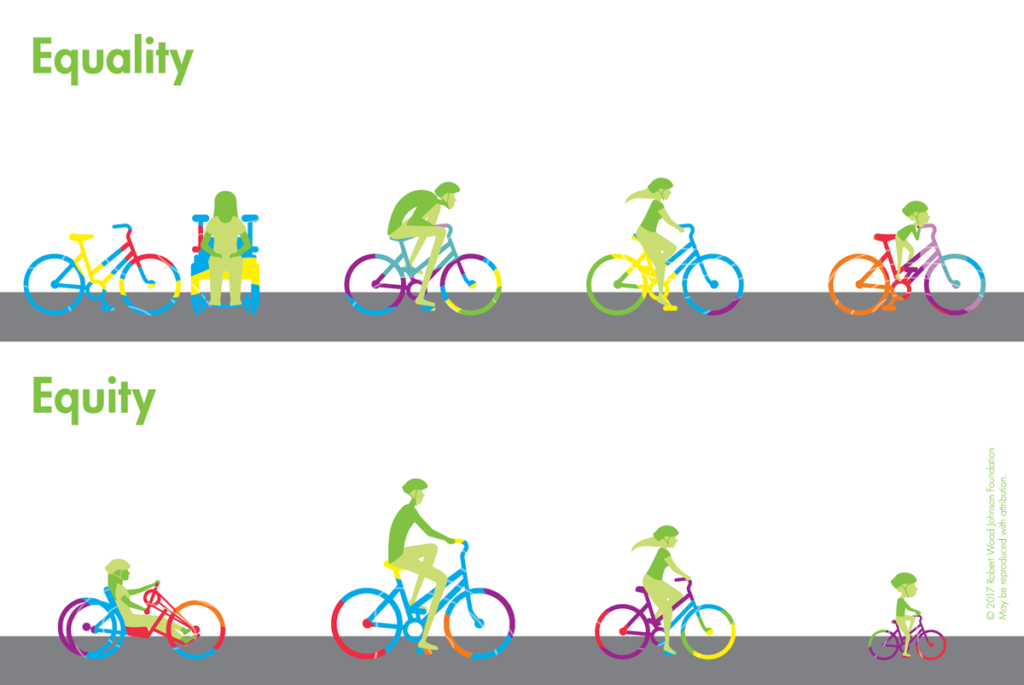Now, Equality, Diversity and Inclusion has been a steep learning curve for many of us and, just as you think you have it, it moves on again. I thought my tolerant, equitable approach was enough and progress was being made but, the more I look the more I realise that we all have a long way to go and, frankly, change must be faster.
So, what should any business operating in the 2020s with the ambition to become even more successful be thinking about?
Society Is Changing
It’s a gradual thing in many respects but very often something becomes very apparent. Take minority race or mixed-race families appearing in TV ads. Once very unusual, this is increasingly the norm because these ads reflect everyday life. Take Emma Raducanu – her Twitter account celebrates her allegiances to London (where she’s been brought up), Toronto (birthplace), Shenyang (mother’s birthplace), and Bucharest (father’s birthplace). All things that she should rightfully be proud of but we’ve no doubt she’s a British Champion. So, this multicultural Britain we live in is reflected in the society that we and our customers live in but maybe we need to take stock and check our teams in our businesses reflect this norm.
This is becomes more pressing day by day. Why? Well the Generation Y group (often called Millennials, born between 1980 & 1994) and Generation Z (Centennials, born between the late 1995 and 2010) are firmly entrenched in today’s and tomorrow’s workforce. The oldest are 42, the youngest just 11 but they have grown up with a perspective that says equality, diversity and inclusion is an everyday occurrence, thank you. It’s much more of an issue when it isn’t there – this vast, combined age group see this cultural approach as a necessity to function properly – as of course do many in older age groups.
Definitions We Need to Understand
Equality: This is a clear focus on individuals or groups ensuring they are given the same resources or opportunities to be successful. This approach is not always effective enough so there is an additional angle here – that of…
Equity: This recognises that each person has different circumstances and allocates exact resources and opportunities to ensure an equal outcome.

This simple graphic demonstrates that even if we treat people equally we do not always get the intended results. A family of four can equally be given a bike for a day trip but that doesn’t enable all to participate. But by taking the next step and delivering bikes that suit the children and the adults the entire family can reach the pedals and participate… (Graphic from Momentus Institute). As the author Nicholas Kristof puts it, “talent is universal; opportunity is not.”
Diversity: Recognises that people are different and values that difference.
Inclusion: Ensures that everyone feels respected and heard; feeling safe to contribute.
The Benefits Then?
Well apart from engaging your team and your customers how about the facts from the likes of McKinsey, Boston Consulting Group and PWC? Their reports highlight better innovation and decision making leading to improved financial performance, as well as stronger reputations for those businesses with a diverse workforce. Who wouldn’t want that?
What’s Happening Today?
Probably too many of us think ‘we don’t have any prejudices here’ whereas most commentators suggest this simply flags up there are issues or simply a lack of awareness and focus. Unconscious bias is often discussed here too where we might have a bias we are not even aware of – all too often this holds people back and we need to be open about this subject and at times re-educate ourselves.
If we took the example of sexual discrimination it is clear that the motor industry is one example that has advanced significantly. However, could we be clear that our partners, daughters, sisters or nieces wouldn’t face sexual discrimination? Take a look at this clip to see how prejudice is apparent when children are as young as 5-7 years old: https://www.youtube.com/watch?v=qv8VZVP5csA.
And how did advertising like this Covid example still get through?

At the same time a recent LinkedIn Survey highlighted some of the challenges that employers face in trying to attract candidates from a broader perspective. Some 38% said finding them was hard, 27% said they had difficulties retaining them and 14% indicated challenges getting diverse candidates past the initial interview stage.
What Can We Do?
Well, as ever, there’s a range of things:
- We need to ensure that the culture within our businesses truly reflects how we want things to be done around here. A strong set of values and behaviours is a sound place to start – these set expectations to ensure people operate the way you do.
- We need to check whether we’re recruiting from a wide enough range of sources. Are we removing some profiles too easily and have we briefed those involved in the recruitment process to engage a wider community, reflecting your customer base. We are talking about creating opportunities here to ensure we reflect society.
Of course there’s other things we could do on a personal let alone business basis. Could we mentor an under privileged child – you’ll be amazed how much your experience and training counts for a youngster seeking a chance. There are some incredible national schemes out there. How about contacting a local school and taking even one youngster a year for Work Experience for a week this coming July?
Anyone joining a team needs the space to be authentic, allowing them to be genuine and open in a safe environment where any differences aren’t considered the equivalent of a high viz jacket.
Ensure everyone can feel an affinity with the team. This doesn’t mean making them water down their differences just to fit in, it’s an open approach to authenticity. Their feeling of affinity drives inclusion.
Of course, this is a huge topic that is moving incredibly fast but as a wise person once said to me: never spot a bandwagon as it goes past you… Making opportunities for the widest possible audience will ensure you’re ahead of the curve.